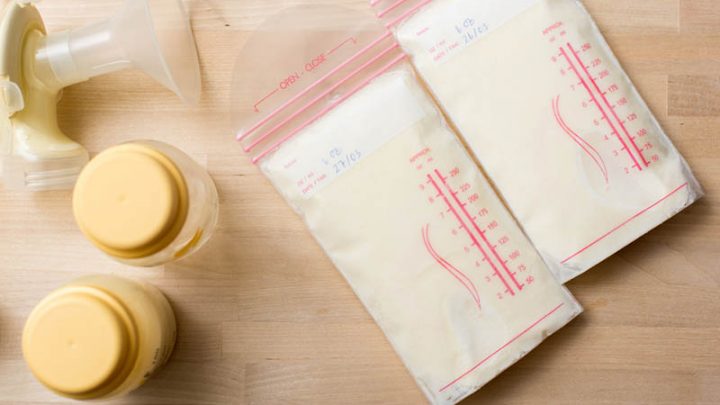Every mom is going to have to learn how to store and properly preserve expressed breast milk, although it might sometimes go wrong, which is why you need to know how to tell if breast milk is bad.
While not exactly the same as store-bought milk, knowing how to tell if breast milk is bad isn’t much more difficult, though you will need to be on the lookout for several other factors instead.
It might sound like a weird thing, but if your breast milk seems soapy it’s a good indicator that it’s starting to go bad, especially if it’s been kept out at room temperature for a while.
Human milk can’t really stay out of the fridge for very long, and it has a shorter expiration date than other forms of milk.
After an hour or two out in the open, it will already start looking funny and beginning to spoil.
This is why moms often tend to keep frozen breast milk in storage containers and give it to their little ones the moment the thawing process finishes.
While many new parents often believe that expressed human milk will look the same as dairy milk, the truth is that it’s quite different, something you’ll notice the first time you use a breast pump and put the expressed milk into a storage bag.
What makes it so different, and why does it spoil so quickly?
To figure all of this out, I’ve written down a few methods for how to notice spoiled breast milk as well as some ways to use it if it’s not too far gone.
How To Tell If Breast Milk Is Bad
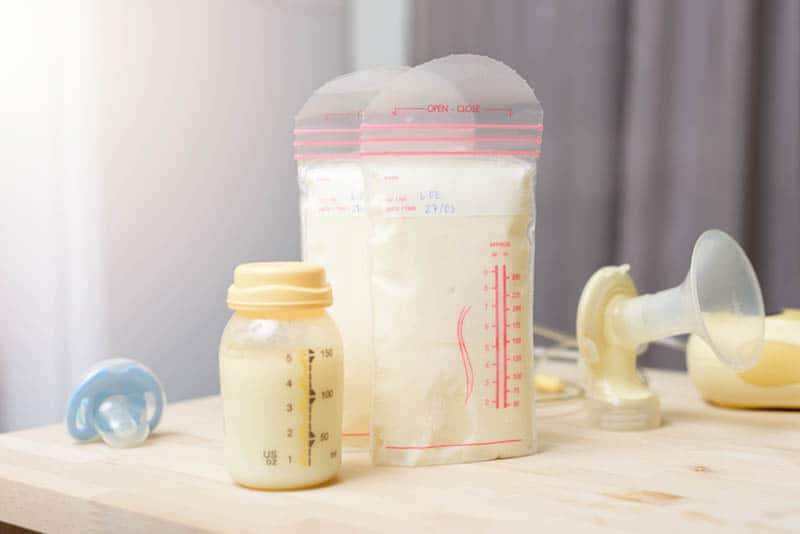
Before trying to figure out how to tell if breast milk is bad, you must first understand the different states of human milk.
Expressed breast milk comes in three different forms depending on factors like the length of time that has passed after expression and temperature.
The first state is that of fresh milk.
This is a self-explanatory term as it describes milk that has been out of the breast for only a very short time and is still in its most potent form.
The next is usable milk.
This refers to milk that’s been out for a while and is nearing its expiration date, whether stored or not.
It’s by no means harmful to your little one as far as drinking it is concerned, but it’s not quite as rich in antibodies and nutrients as fresh milk would be.
You might notice some discoloration, but it’s still mostly good.
It may have also turned a bit soapy, but that’s nothing a little bit of scalding in a pan can’t fix.
The final form is spoiled milk, which has definitely gone past its best before date and shouldn’t be fed to your child under any circumstances.
This isn’t that easy to spot at first glance, but there are a few methods you can use to help suss it out, some of which are similar to the methods you would use to identify whether or not cow’s milk or other dairy has started to turn.
1. Stirring the milk

While the idea that stirring regular milk could be a factor in discerning whether it has gone bad might sound crazy, it’s not quite so strange when it comes to breast milk.
You see, human milk, even when fresh, tends to separate in the breast milk storage bags, or any similar container, if left alone for a while.
The foremilk goes to the top while the denser hindmilk heads to the bottom.
RELATED: What Is Foremilk/Hindmilk Imbalance And How To Deal With It?
However, with fresh breast milk, stirring it makes it fuse back together rather easily, but as the spoilage percent creeps in further and further, it will start becoming harder and harder up to the point where you will see chunks floating about inside or the milk just stays separated.
Should that ever happen you can safely throw it out, because at this point the milk has gone bad.
2. The smell test
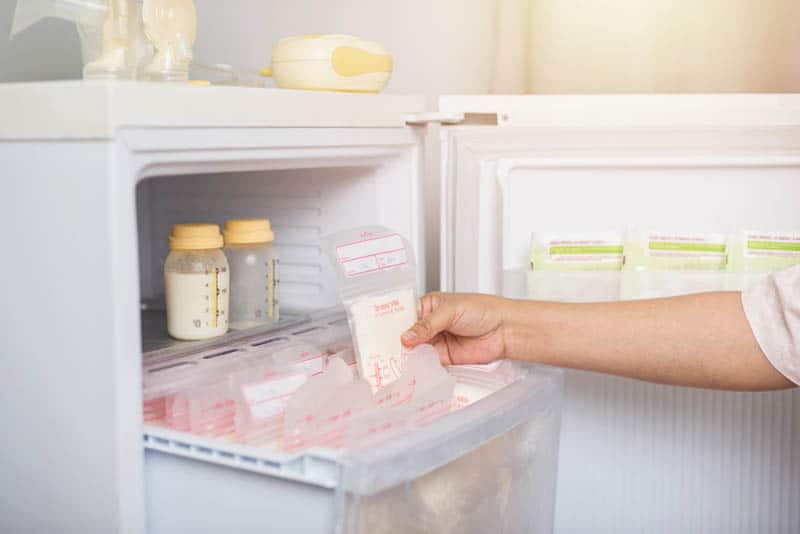
A familiar method for any of you who have had to deal with the rancid smell of spoiled milk is to simply smell it, though this method only works for milk that’s been out in the open or that’s been stored in the refrigerator, not the freezer.
This isn’t a method with pinpoint accuracy for milk that’s thawed out from the freezer for moms with high lipase activity in their breasts, as the lipase-rich milk tends to have a soapy smell and even a slightly sour taste, but it’s still completely fine for consumption.
That isn’t always the case, however, as our breast milk is prone to going bad regardless and will still have a very strong smell of sour milk.
However, it’s still a good idea to check and see if you’re producing high lipase breast milk so you’re not throwing perfectly good milk away.
You might not want to bother your family doctor for such a matter, though.
Luckily, you can test if your milk supply contains the lipase enzyme at home by expressing a small amount of milk and freezing it.
After a few days take the stored milk out, thaw it, and smell it to see if it has that distinct soapy smell.
If not, then you’re home free, but if it does, then you might need to scald your milk to get rid of the smell.
While it is safe even if the breast milk smells, it isn’t uncommon for your child to think otherwise, and the baby may reject the milk outright because it’s tickling his nostrils in a funny way, which is why scalding might be a necessary measure.
3. The taste test
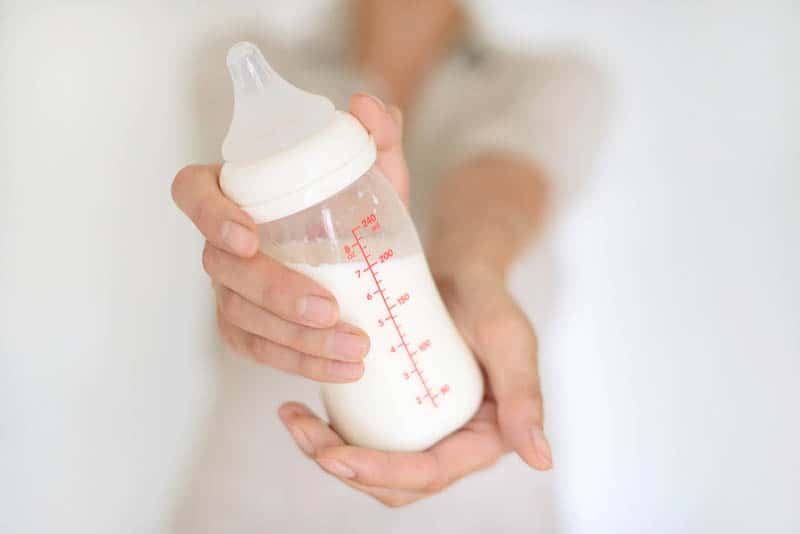
The final method of how to tell if breast milk is bad is to try the mother’s milk yourself.
Be the guinea pig prior to giving it to your child so you don’t end up giving him a spoiled batch and risk upsetting his stomach and making him fussy.
When you give fresh breast milk a try for the first time, you’ll notice it doesn’t taste the same as milk from an animal due to the difference in content, but it’s something you’ll get used to if this becomes your preferred method for testing spoilage.
Generally, you’ll notice a wide variety of different tastes depending on how you store breast milk, but if you ever notice it tasting very sour or even rancid, it’s time to throw it away.
The sour taste might also be due to the high amounts of lipase present in the milk as mentioned in the previous method, in which case you’ll want to confirm that before throwing any future batches of milk away for no reason.
Should that not be the cause, but the milk tastes a bit sour still, toss it out immediately.
Scalding Milk
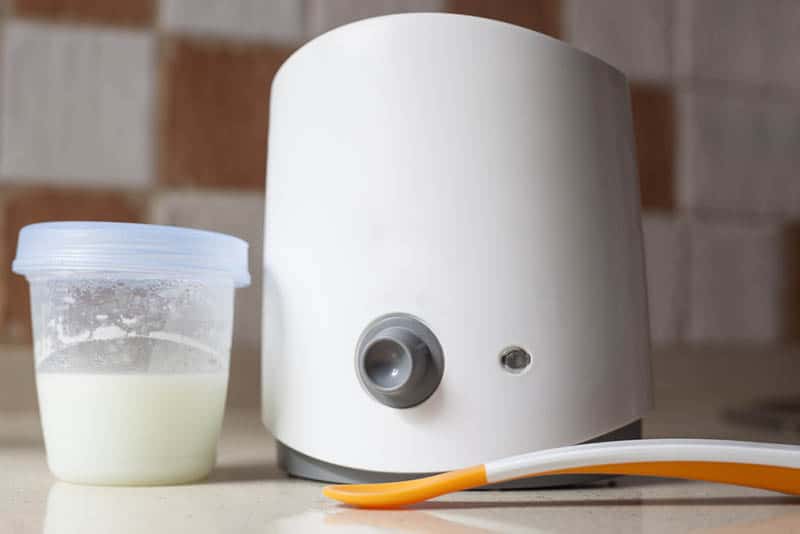
I mentioned this in the two methods above for helping deal with the high lipase content that might be present in your breast milk.
You can use a bottle warmer for this, although using a pan to heat it up works just as well.
The process itself doesn’t really change much, just the container you’re doing it in.
For the pan method: heat the milk up to about 140°F-180°F, whenever it starts to boil.
Don’t fill the entire pan as it might start spilling onto your stove top.
Also, make sure the temperature isn’t too high as you might end up burning the nutrients, making the milk worthless.
Some nutrients will be lost regardless, but if it makes it so your baby drinks it, it’s a worthy sacrifice.
Stick to lower temperatures and slowly work your way up to help preserve the maximum amount of nutrients possible, while eliminating both the smell and the taste.
Once the milk has reached the desired temperature, pour it into a bottle made from pyrex or stainless steel so it traps the heat inside.
When that’s done, submerge it in a large bowl of ice to drastically lower the temperature.
This is the entire scalding process, and it doesn’t take more than a few minutes of effort.
Once the bottle has cooled down sufficiently, pour the contents back out into a storage container and put it back in the freezer for preservation (or feed it to your child now).
The only thing that changes in the bottle warmer method is the pan is swapped out for a bottle warmer, but the rest is more or less the same.
You might want to get a digital thermometer to help measure the temperature of the milk on the stove, because eyeballing it will often yield incorrect results, plus it’s a useful tool for cooking/baking in general.
How To Avoid Dealing With Spoiled Milk

While learning how to tell if breast milk is bad is important, it’s even more important to learn how to properly store milk according to proper storage guidelines.
There’s a general rule concerning how long it takes for milk to spoil depending on the storage method called: the rule of 6.
It basically says: milk left on the counter will usually spoil within 6 hours.
Milk stored in the refrigerator tends to vary a bit, but on average it lasts up to 6 days, a bit less if you’re keeping it in the fridge door due to larger temperature fluctuations when you open and close the fridge.
Keeping it in the back of the fridge helps avoid this.
Finally, milk kept in a freezer can last up to 6 months, and even up to 12 months if you’re lucky enough to have a deep freezer.
The kind of containers or bags for breast milk storage you end up using doesn’t really make much of a difference, so feel free to use plastic bags, bottles, or whatever else makes storing milk from a pumping session easier.
The one thing you might want to be wary of is if you’re using plastic bags for storing milk, make sure they’re BPA-free before buying them as it can be absorbed into the milk, which you don’t want your little one to deal with as it’s harmful to kids.
The other thing to take into account is if you’re using storage containers, you need to make sure the lid is on very tight so no air can slip between the cracks and make the milk spoil faster.
Avoid milk storage bags made from thin layers of plastic as they burst or tear from mishandling a lot easier than others, resulting in a huge mess in your freezer/fridge that’ll be a nightmare to clean up.
Another tip to ensure all of the milk gets used is to mark down batches as you express them and use them in order from oldest to freshest.
This way you won’t accidentally end up forgetting about a bag or two in the back of the fridge.
Finally, the way you store it is also important.
As mentioned earlier, keeping stored milk in the door of the fridge makes it spoil faster than milk stored in the back of the fridge due to the increased temperature fluctuations.
The same applies to freezer storage too, place the bags in the back of the freezer rather than the front to ensure maximum storage efficiency.
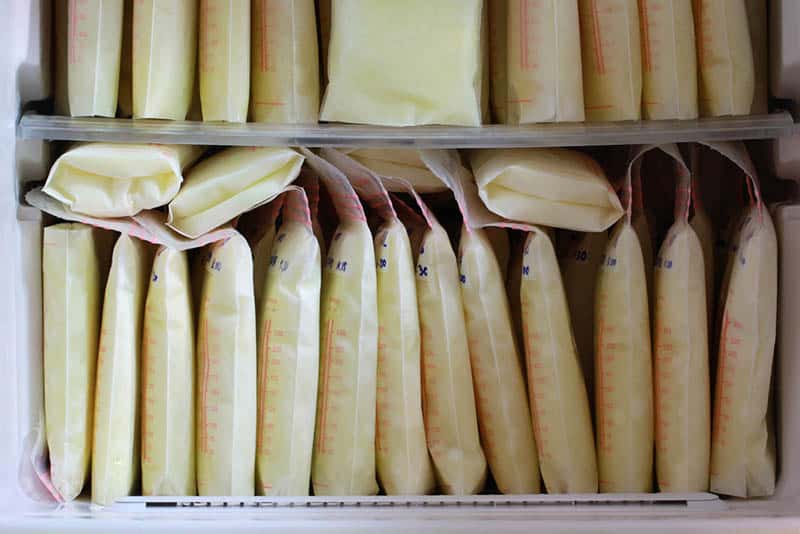
In Conclusion
Knowing how to tell if breast milk is bad isn’t a skill that’s hard to pick up as most methods used often apply to regular cow’s milk as well.
All you need to do is either smell, taste, or stir it to discover the answer.
However, it’s more important to know how to properly store it as well as the effectiveness of each storage method to minimize the loss of milk.
Alternatively, you can try exclusive breastfeeding to avoid losing out on any milk, though that requires a lot of dedication and for you to be around your baby at all times.
Keeping a stash of milk lets you work full-time and enjoy other hobbies on the side, while your partner or other caregivers help feed the baby with the pre-expressed milk.
If you want to learn more about other potential methods on how to know if breast milk is bad, I suggest asking your lactation consultant for advice on the matter.
Other than that, I wish you happy pumping!
Like this post? Please share or pin it for later. You can also stay in the loop and follow us on Facebook, Instagram or Pinterest.
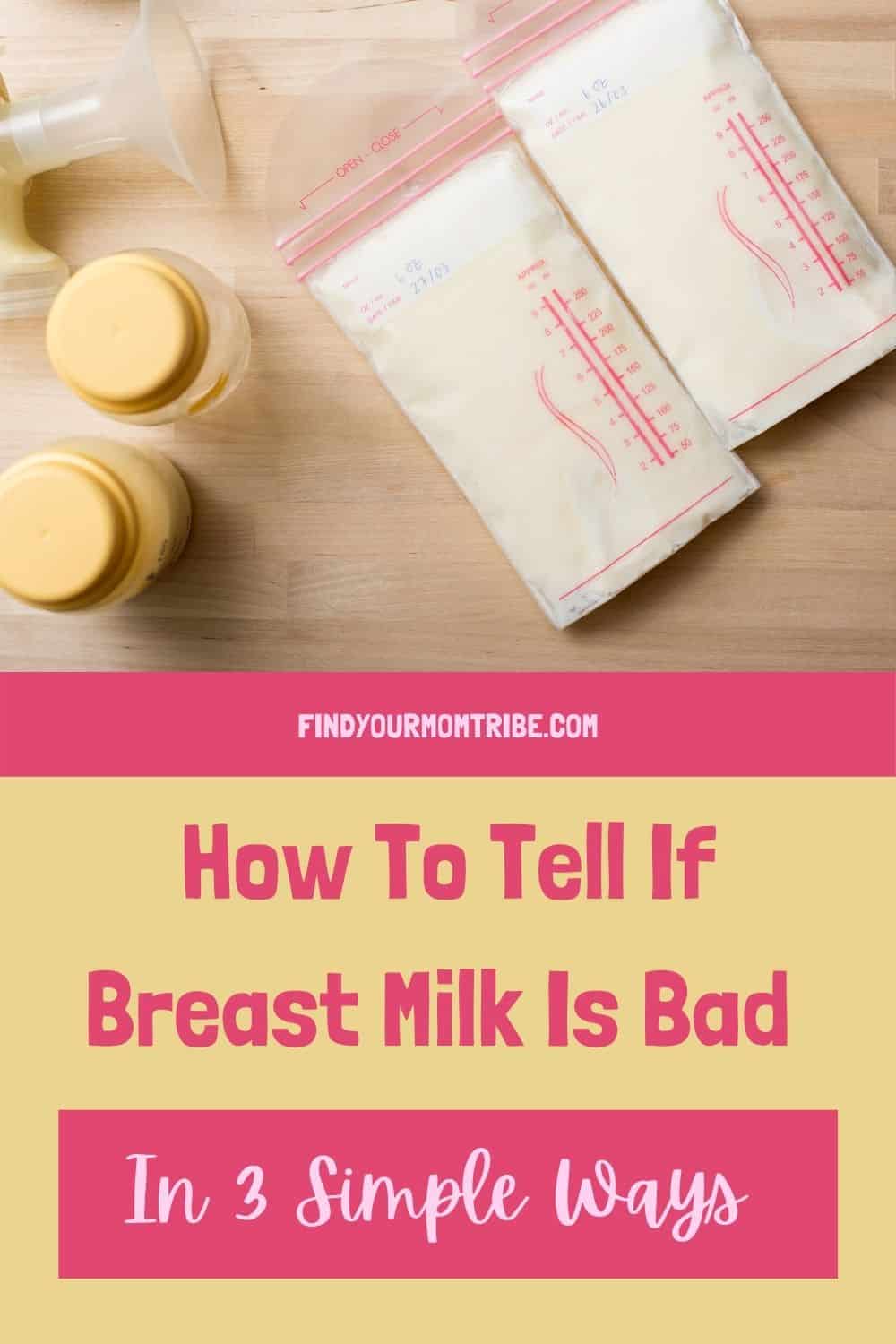
We love honesty! Find Your Mom Tribe is an Amazon Associate and we earn from qualifying purchases through affiliate links at no extra cost to you. Please see our full Amazon Affiliate disclosure for more information.

